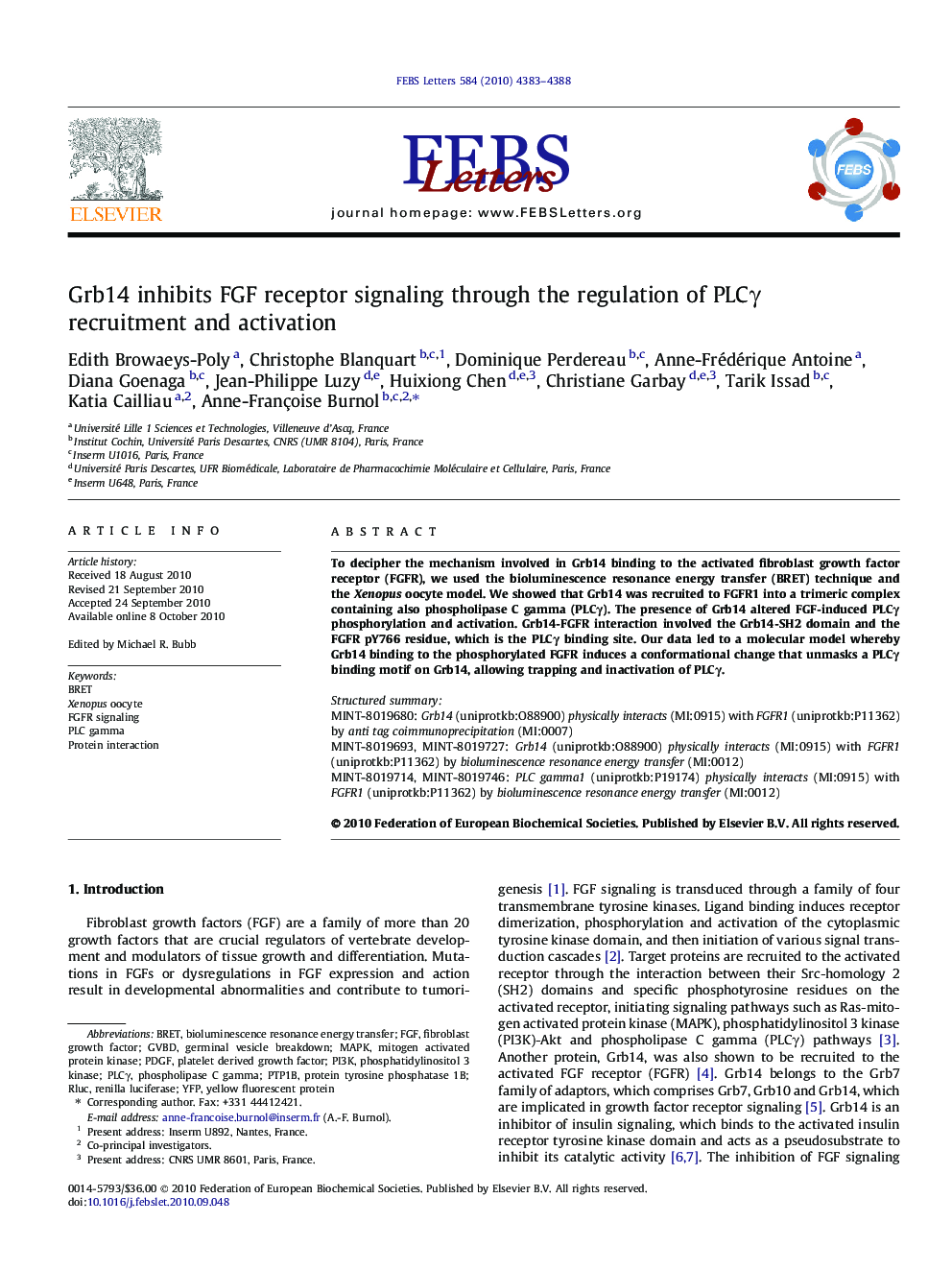| Article ID | Journal | Published Year | Pages | File Type |
|---|---|---|---|---|
| 2048799 | FEBS Letters | 2010 | 6 Pages |
To decipher the mechanism involved in Grb14 binding to the activated fibroblast growth factor receptor (FGFR), we used the bioluminescence resonance energy transfer (BRET) technique and the Xenopus oocyte model. We showed that Grb14 was recruited to FGFR1 into a trimeric complex containing also phospholipase C gamma (PLCγ). The presence of Grb14 altered FGF-induced PLCγ phosphorylation and activation. Grb14-FGFR interaction involved the Grb14-SH2 domain and the FGFR pY766 residue, which is the PLCγ binding site. Our data led to a molecular model whereby Grb14 binding to the phosphorylated FGFR induces a conformational change that unmasks a PLCγ binding motif on Grb14, allowing trapping and inactivation of PLCγ.Structured summaryMINT-8019680: Grb14 (uniprotkb:O88900) physically interacts (MI:0915) with FGFR1 (uniprotkb:P11362) by anti tag coimmunoprecipitation (MI:0007)MINT-8019693, MINT-8019727: Grb14 (uniprotkb:O88900) physically interacts (MI:0915) with FGFR1 (uniprotkb:P11362) by bioluminescence resonance energy transfer (MI:0012)MINT-8019714, MINT-8019746: PLC gamma1 (uniprotkb:P19174) physically interacts (MI:0915) with FGFR1 (uniprotkb:P11362) by bioluminescence resonance energy transfer (MI:0012)
